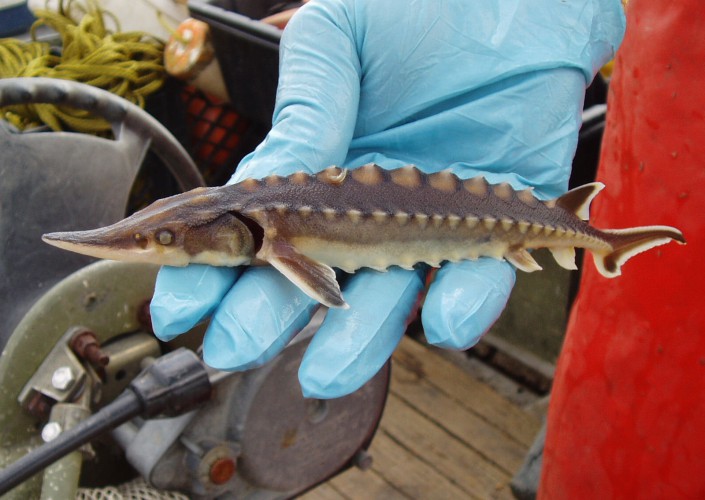Atlantic Sturgeon Added to NJ’s Endangered Species List
A “LIVING FOSSIL” IN DANGER OF BECOMING EXTINCT
By Michael Davenport, Marine Species & GIS Programs Manager
New Jersey’s list of endangered and threatened species increases to 84 this week with the addition of the Atlantic sturgeon. It is the second fish, along with the shortnose sturgeon, on that list.

After a lengthy review process, the National Oceanic and Atmospheric Administration (NOAA) listed the Atlantic sturgeon as Endangered under the federal Endangered Species Act. Species which occur in New Jersey and are listed as Endangered on the federal level, automatically become listed as Endangered at the state level as well.
Sturgeon are often referred to as “living fossils” because they are among the oldest groups of bony fishes and have retained primitive characteristics. Like the shortnose sturgeon, Atlantic sturgeon are slow-growing, long-lived fish which mature late in life. Both species have been overfished both for the eggs and their flesh and their populations have yet to recover. Despite the current ban on their capture, they continue to face threats due to unintentional catch (bycatch), pollution, dredging of critical habitat, and boat strikes.
While both species of sturgeon inhabit the Delaware and Hudson rivers, the Atlantic sturgeon also occurs in marine waters with Delaware and Raritan bays and along New Jersey’s Atlantic coast. To learn more about this species, please visit our on-line field guide page.
Discover more from Conserve Wildlife Foundation of NJ
Subscribe to get the latest posts sent to your email.